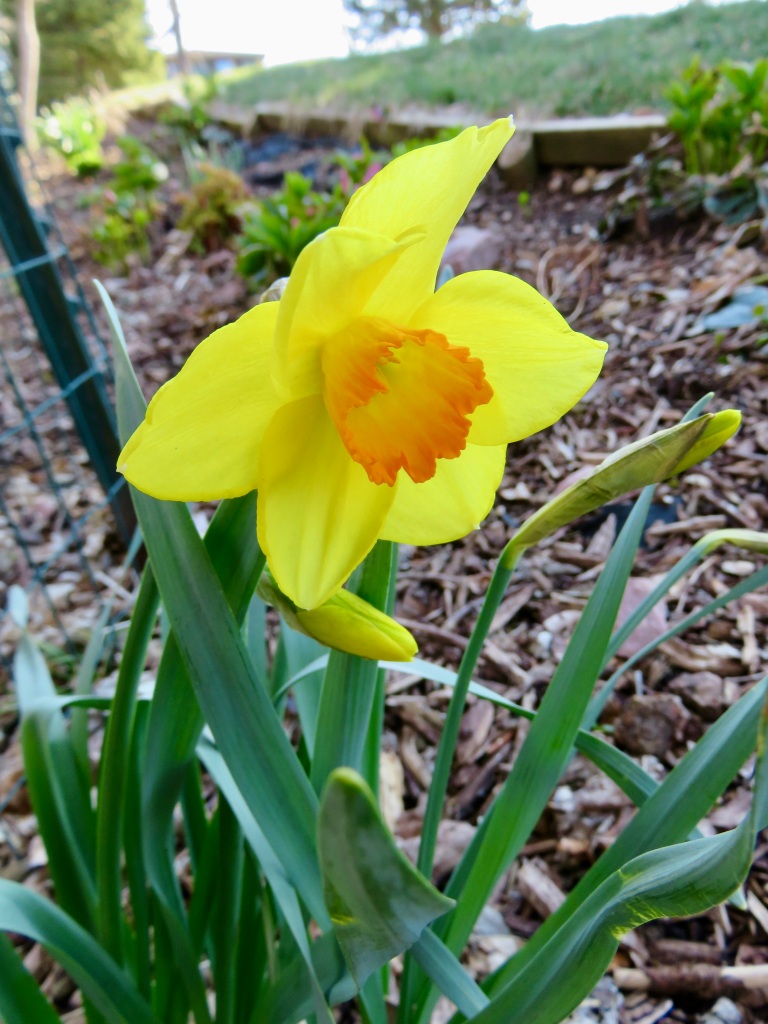No wonder Daffodils (Narcissus sp.) are a common sign of spring. We can see the sunshine that flows through them.

Daffodils grow in USDA Hardiness Zones 3-8 and beyond in the United States. Their bulbs require cold before they break dormancy, so they are planted in the fall.
Daffodils, with their vibrant blooms, emerge and grace sunny areas or the edges of woods (like this one) before deciduous trees have leafed out. The leaves, a verdant backdrop, become foliage to showcase other late-spring flowers.
Deer, rabbits, and other rodents rarely disturb the plants or bulbs due to their protective alkaloids. The very name Narcissus, derived from Greek, means “to make numb,” a testament to their unique defense mechanism.
Its flower stems and bulbs are especially protected by alkaloids produced by the plant. Daffodils propagate by bulb division and from seeds formed beneath the flower after insect pollination. Large bulbs often indicate ample energy storage. The first spring flowering plants must have enough storage to bloom or delay in fickle spring temperatures.
Given adequate soil conditions, the long-lived perennial bulb can produce 25 new plants over the years. Some daffodil species naturalize as a yellow drift in spring better than others.

Some plants are so ubiquitous that they become the backdrop of a season rather than valued for their efficient and capable qualities. Bring on spring daffodils!